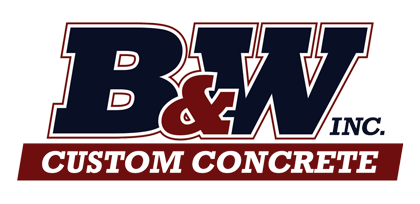Concrete is durable, but let’s face it - it’s a bit cold in appearance. If this steely, monochromatic surface isn’t your style, B&W Custom Concrete has three ways in which we can update it to impart deep hues and designs that won’t fade or peel. You’ll go from drab to fab in no time with one of these creatively artful processes:
Exposed Aggregate
Aggregate is just a fancy way of saying stone, pebble, rocks, or sand. An exposed-aggregate surface is obtained by pouring concrete and then removing the outer 'skin' of cement paste to uncover decorative coarse aggregate (either batched into the concrete mix or seeded onto the surface). This process has been used since the early 1900s, long before pattern stamping, stenciling, and decorative overlays became trendy; however today we have found creative ways to take exposed aggregate to a new level.
Because of its skid resistance and durability in heavy traffic areas, an exposed aggregate finish is ideal for driveways, patios, pool decks, walkways, and much more. This process is also used for decorative retaining walls, commercial building facades, and highway sound barrier walls because it can hold up for decades.
Colored Pattern Stamped Concrete
Color pattern stamped concrete is concrete that is patterned and/or textured or embossed to create the appearance of natural materials such as brick, tile, slate, flagstone, stone, wood, and various other materials. This process involves "stamping" or "impressing" three-dimensional patterns into colored concrete with special stamping tools. It is commonly used for patios, sidewalks, driveways, pool decks, and interior flooring. Most stamped concrete has two colors: a base color and an accent color. When the stamping is complete, the product is then sealed, highlighting the colors and providing greater stain and weather resistance. The result is a surface that combines the beauty of masonry with the durability of concrete.
Acid Staining
Acid staining can give concrete a look of deep marbling, along with a color unlike any other type of flooring. Most acid stains are a mixture of water, hydrochloric acid, and acid-soluble metallic salts. They work by penetrating the surface and reacting chemically with the hydrated lime (calcium hydroxide) in the concrete. The acid in the stain lightly etches the surface, allowing the metallic salts to penetrate more easily. Once the stain reacts, it transforms it into a uniquely rich palette of colors that become a permanent part of the concrete and won't fade, chip off, or peel away. Acid-stained concrete is durable and resistant to UV light, moisture, and damage. The environmentally-friendly finish costs next to nothing after the initial installation.

